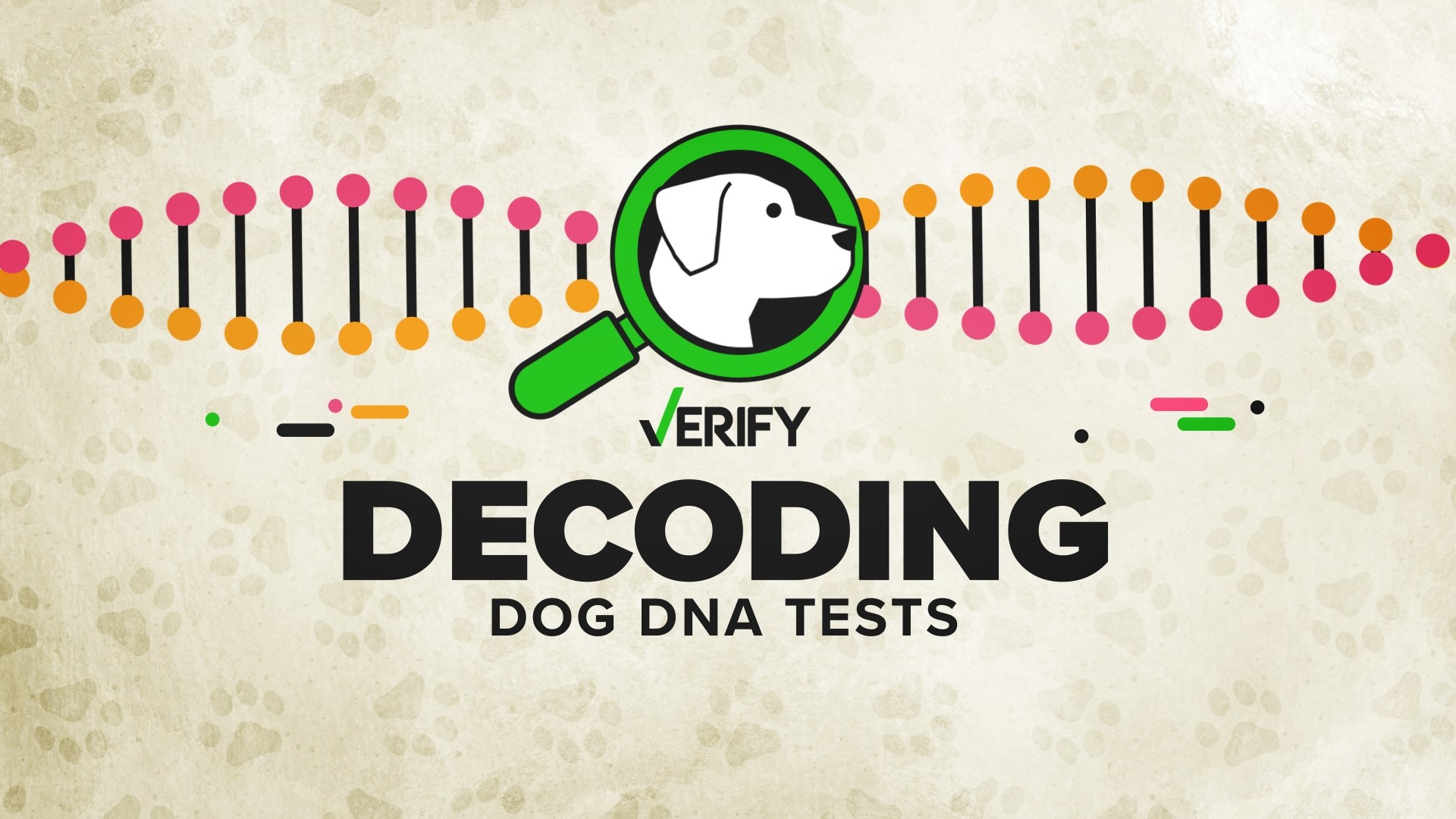Are dog DNA tests accurate? VERIFY sent labs a human sample
VERIFY put three dog DNA companies to the test to figure out if they can identify your dog’s breed as accurately as they say.

Dog DNA tests have become an increasingly popular purchase for many pet owners who are curious about their furry friend’s ancestry. And since so many dogs are rescues or mixed-breeds, there are plenty of potential customers for these dog DNA companies.
They are so popular that dog DNA testing has become a $235 million industry, according to Zion Market Research. VERIFY readers reached out to us to ask if these tests are accurate.
VERIFY looked into the science of dog genetics, DNA testing and what research says about different dog DNA companies. We also conducted our own experiment to determine the accuracy of three popular dog DNA testing companies.
Our testing included four DNA samples: a purebred dog with documented pedigree, one dog the owners were told is a German wirehaired pointer and Labrador retriever mix, one rescue mutt of unknown origins and a human. We sent these samples to three dog DNA testing companies to get a sense of their accuracy and any differences between them.
THE QUESTION
Can you determine your dog’s breed from a DNA test?
THE SOURCES
Elaine Ostrander, Ph.D., a scientist whose lab at the National Human Genome Research Institute focuses on canine genetic research
Halie Rando, Ph.D., assistant professor of computer science at Smith College who was the lead researcher of a University of Colorado study researching quality of commercial dog DNA tests
VERIFY test of three dog DNA test kits: Embark, Wisdom Panel and Viaguard Accu-Metrics
Rebecca Foran, Ph.D., head of research and development at Wisdom Panel
Jenna Dockweiler, Ph.D., a veterinary geneticist at Embark
Spokesperson for Viaguard Accu-Metrics
THE ANSWER
Yes, you can determine your dog’s breed from a DNA test. However, the reliability of dog DNA tests varies from company to company.
Chapter 1 Our Dogs
VERIFY tested the DNA of three dogs – one purebred long-haired dachshund with documented heritage, a rescue mutt who the owners were told is part German wirehaired pointer and part Labrador, another rescue mutt with unknown origins – and one human VERIFY reporter named Josh Sidorowicz.
The purebred dog is Versace, an American Kennel Club (AKC) champion long-haired dachshund owned by Connie Delaney in Lutz, Florida. Delaney has the documentation and certification that state Versace is a purebred with lineage and pedigree that goes back generations.
When asked what she was expecting from the DNA test, Delaney said she would be “absolutely amazed” if the results suggested Versace was anything but a purebred dachshund.

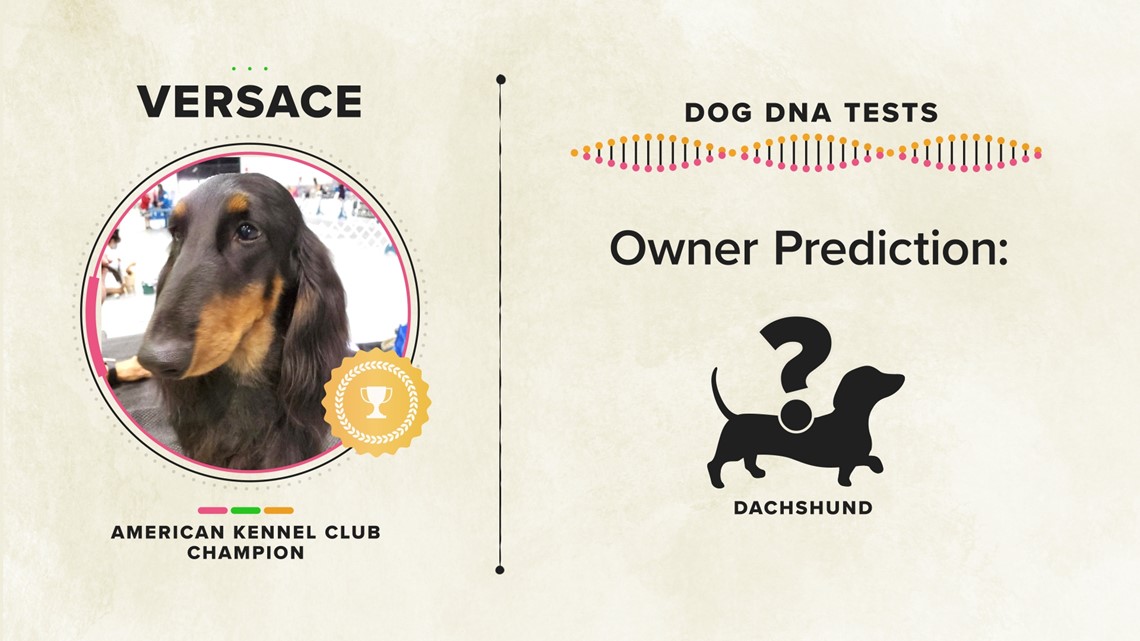
There is no documentation for our mixed-breeds, both of which are rescue dogs.
Maka is an 11-year-old rescue mutt who lives in St. Petersburg, Florida, with Tony Loeffler and Michael Griffin. Loeffler says they were told he is a mix of Labrador retriever and German wirehaired pointer.

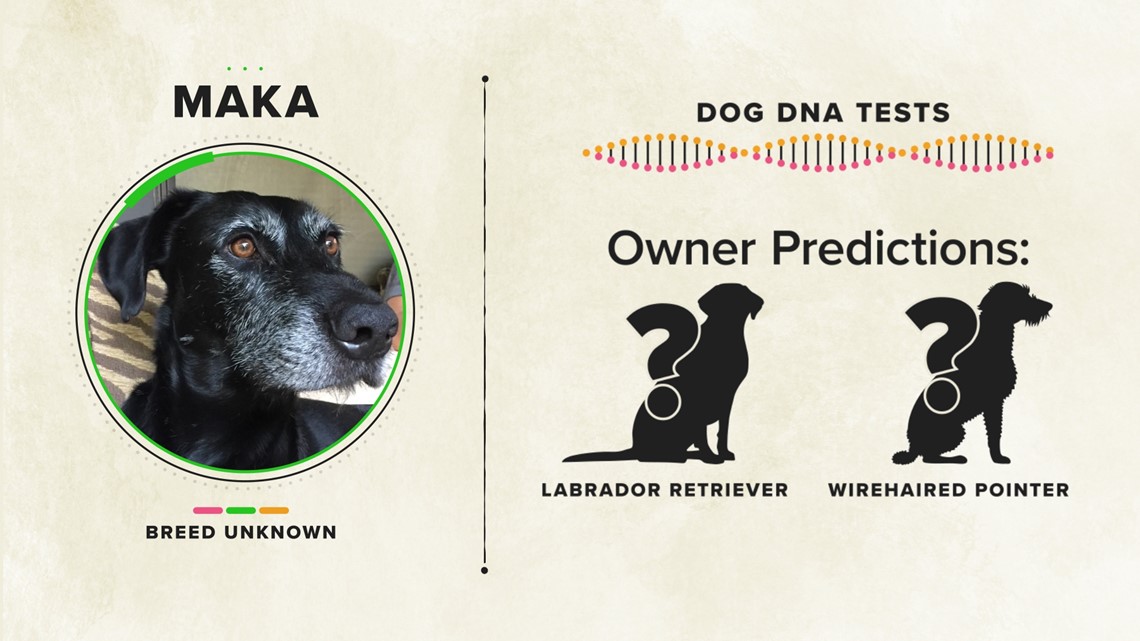
Beau is Sidorowicz’s dog he adopted as a puppy from a local rescue in 2018. Sidorowicz says he thinks Beau, who is brindle-colored, is some kind of Labrador retriever mix.
“My husband likes to tease me now and remind me how resistant I was for so long to the idea of us having a dog because now, of course, I couldn’t imagine a world without our Beauster,” Sidorowicz said.

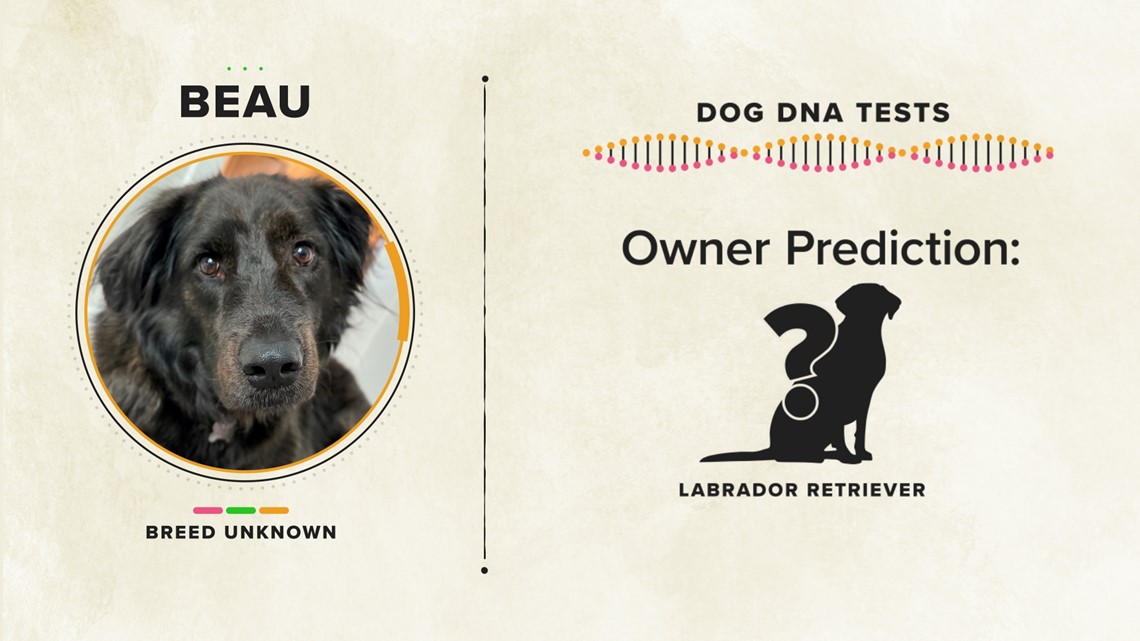
Finally, Sidorowicz took a sample of his own DNA to submit for dog DNA testing just to see if any of the companies could tell the difference between human DNA and a dog’s DNA.

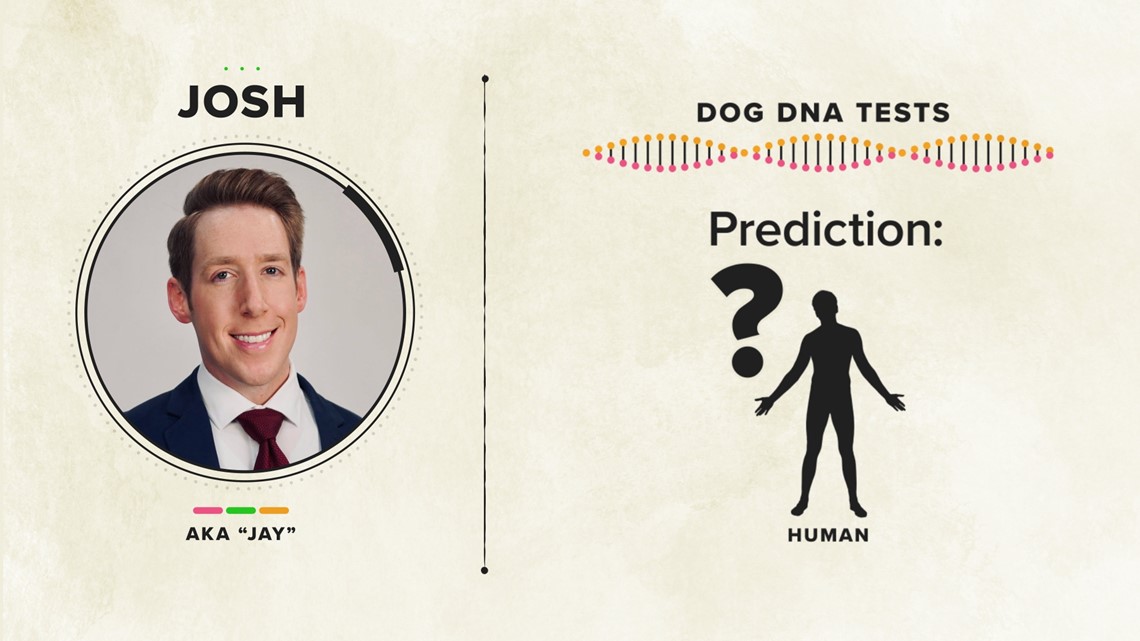
Chapter 2 The Science of Dog DNA
Dog breeds are genetically distinct enough that it is possible to accurately determine a dog’s breed through scientifically sound DNA testing.
“Being able to tell what breed your dog is can be done with very, very high fidelity,” Elaine Ostrander, Ph.D., a scientist whose lab at the National Human Genome Research Institute focuses on canine genetic research, told VERIFY in an interview. “Being able to tell what the major component breeds of your mixed breed are done, again, with very high fidelity from multiple companies.”
There is much more genetic variation between different breeds of dogs than there is between different populations of humans, Ostrander wrote in the American Scientist, a magazine published by the Sigma Xi: The Scientific Research Honor Society.
“Thus the concept of a dog breed is very real and can be defined not only by the dog's appearance but genetically as well,” Ostrander wrote.
To illustrate this, Ostrander described a study in which a computer had to identify a dog’s breed by genetic profile alone. The computer correctly identified the breed of 99% of dogs it was asked to identify.
Chapter 3 How to Test a Dog's DNA
First, you have to get a sample of a dog’s DNA. Dog DNA companies usually provide a swab you can use to collect your dog’s DNA from the saliva inside of its mouth.
“Once you’ve got your swab, follow the steps to package it up and ship it to the company. After the lab receives it, their technicians will extract and process the DNA,” ASPCA Pet Health Insurance says. “They’ll use a computer algorithm to match the chromosomal patterns of your pet’s DNA to a breed database.”
To accomplish this, Ostrander says the tester needs “reference panels” to determine the breed or breeds of a dog. These reference panels are basically samples of that dog breeds’ DNA already in the tester’s database.
The AKC and owners of purebred dogs tend to keep pedigrees and registration numbers that allow researchers to go back five generations or more in the dog’s ancestry, Ostrander says. By collecting DNA samples from these dogs, researchers can build accurate reference panels with dogs they know to be a particular breed.
Halie Rando, Ph.D., a computer scientist and the lead researcher in a University of Colorado study on the accuracy of several dog DNA tests, explained how these reference panels of purebred dogs can then be used to identify the pedigree of mixed-breed dogs.
“So in the U.S., that typically means someone would start with samples collected from AKC registered dogs, and then use those as a prototype of the genetic information associated with that breed,” Rando said. “And then if you have a mixed-breed dog, you can compare that information against the purebred dogs and identify the percentage of their genome associated with each purebred.”
So we can VERIFY that accurate DNA testing of dogs is possible. But not all DNA tests on the market are created equal.
Chapter 4 Our Tests
VERIFY conducted our own study by testing three dogs’ and a human’s DNA using three popular dog DNA testing companies: Viaguard Accu-Metrics, Embark and Wisdom Panel.
Embark and Wisdom Panel are the two companies that most frequently show up in online lists of the best dog DNA companies. They are two of the three most highly rated tests on a commercial DNA test review site.
While many dog DNA test companies use similar methods to determine a dog’s breed, those methods and the data used to support the tests aren't exactly the same. So test results can still vary from company to company.
“To determine breed ancestry of a given dog based on their DNA, Embark uses a proven scientific process that compares a dog’s DNA to the DNA of tens of thousands of purebred dogs in our reference database,” Jenna Dockweiler, Ph.D., a veterinary geneticist at Embark, said. “We can identify what percentage of a dog’s ancestry came from each breed by identifying how much of their DNA matches perfectly to a breed in our reference database.”
Dockweiler noted that other reputable dog DNA companies use a similar method to determine a dog’s breed, but the results may vary between tests due to differences in each company’s reference databases and algorithms.
Rebecca Foran, Ph.D., head of research and development at Wisdom Panel, says Wisdom Panel’s “breed detection system” has error rates two to four times lower than the industry standard.
Accu-Metrics was the least accurate among six dog DNA testing companies in a study conducted by researchers in the Department of Biomedical Informatics (DBMI) at the University of Colorado School of Medicine.
The researchers submitted pictures and DNA samples of 12 different dogs to the various dog DNA companies. Half of the photos were correctly matched with the sample dog’s saliva, while the other half were submitted with saliva from a completely different dog.
Rando told VERIFY that the researchers also had an artificial intelligence guess the dog breed for each DNA sample based on the photo they submitted alongside each DNA test. That includes the six samples paired with photos of entirely different dogs.
“In our study, we found that Accu-Metrics was less accurate than the AI at predicting the breed of the dog, the dog's DNA,” Rando said. “And the [artificial intelligence] could never have succeeded in half of the cases.”
“We are a DNA testing laboratory and our function is to report the results that our DNA analysts derive from the submitted samples,” Viaguard Accu-Metrics said in a statement. “Those results of course can be influenced by the quality of the submitted samples/other factors. Once the results have been released our work is complete and we have no further comment.”
Accu-Metrics was also the third lowest-rated among 17 commercial dog DNA tests listed on DNAtestingchoice.com, the DNA test review site.
Embark and Wisdom Panel both require saliva swabs to collect the DNA samples. Accu-Metrics requires a saliva swab, although it also asks for but does not require a photo of the dog. Embark and Wisdom Panel do not ask for a photo of the dog.
Chapter 5 Dog DNA Industry isn't Regulated
ASPCA Pet Health Insurance says the dog DNA industry isn’t regulated, which makes it hard to gauge claims companies make about the accuracy of their tests.
“While dog DNA services may boast a high percentage of accuracy, those claims are based on evaluations done by the companies themselves,” Hartville Pet Insurance says. “Their claims may be correct, but they haven’t been validated by an outside party. In addition, services use different methodologies, which aren’t available to the public for comparison.”
There are a number of reasons why different commercial dog DNA tests may yield results and vary in accuracy, Foran, who works for Wisdom Panel, says.
“Breed mix results from different DNA testing companies can vary in some cases,” Foran said. “This is because each pet DNA testing company uses its own reference populations (populations of pets with known geographical origins or purebred lineages) and algorithms to determine breed background.”
Foran said you could think of searching for a dog’s genetic ancestry like you would search for the answer to a question on a search engine like Google.
“The genetic markers are the search term, the ancestry algorithm is the internet search engine, and the reference panel is the extent of data across the web,” Foran said. “You need all three to get the most accurate and precise results.”
Foran said tests can yield different results because of differences in reference panels, differences in the algorithms used to detect a dog’s ancestry based on these reference panels and differences in the types and number of genetic variants considered.
In the University of Colorado study, researchers sent various dog DNA companies genetic samples alongside photos of dogs that were genetically and physically different from the dog the genetic sample originated from. The study was conducted because some dog DNA testing companies require a photo of the dog with its genetic sample.
For example, the researchers sent a photo of a big, silky-haired Brittany spaniel with a genetic sample of a small, hairless Chinese crested.

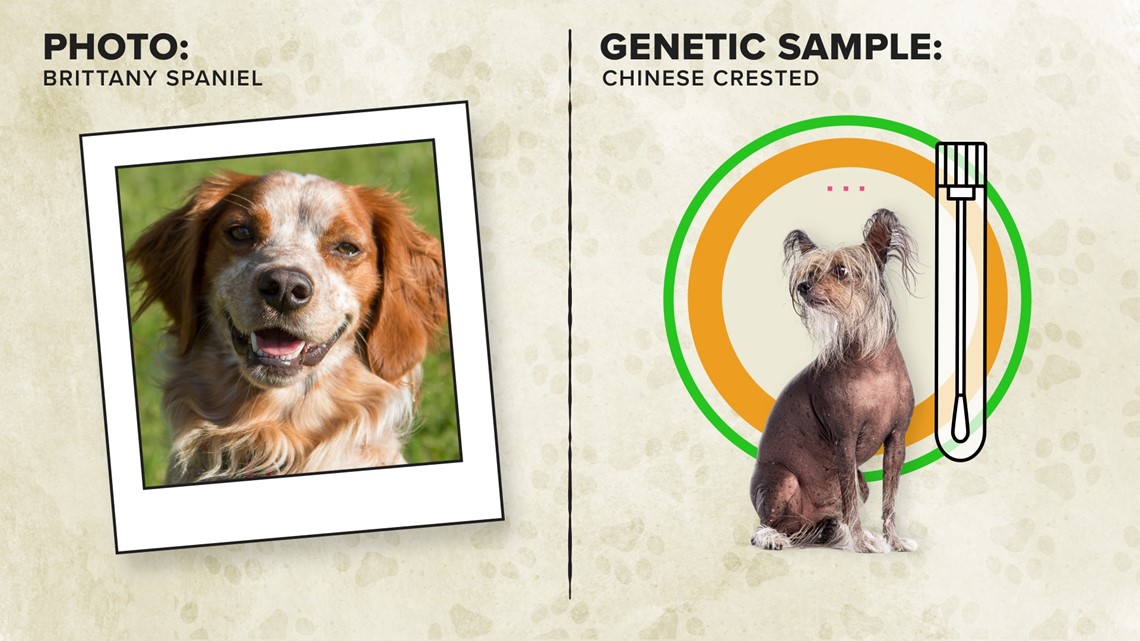
“In five of the six companies, results for the Chinese crested dog that included a photo of the spaniel came back mostly accurate,” the study’s press release said. “But one test, completed by Accu-Metrics, determined in an ‘official analysis’ that the dog was part border collie and part golden retriever — a conclusion that seems to align more with the photo of the dog than the DNA sample.”
The researchers noted there is “no scientific reason” why a photo would be needed to analyze the dog’s DNA. A study conducted by researchers at the University of Florida College of Veterinary Medicine had 5,922 survey respondents guess the breed of 20 dogs from a selection of 100 based entirely on a photo of each dog. The respondents correctly identified a prominent breed an average of 27% of the time.
That means determining a dog’s breed based on its appearance is often ineffective.
Chapter 6 Our Results
Our first test subject was Versace, the purebred long-haired dachshund. Sure enough, all three tests confirmed that Versace is 100% dachshund.

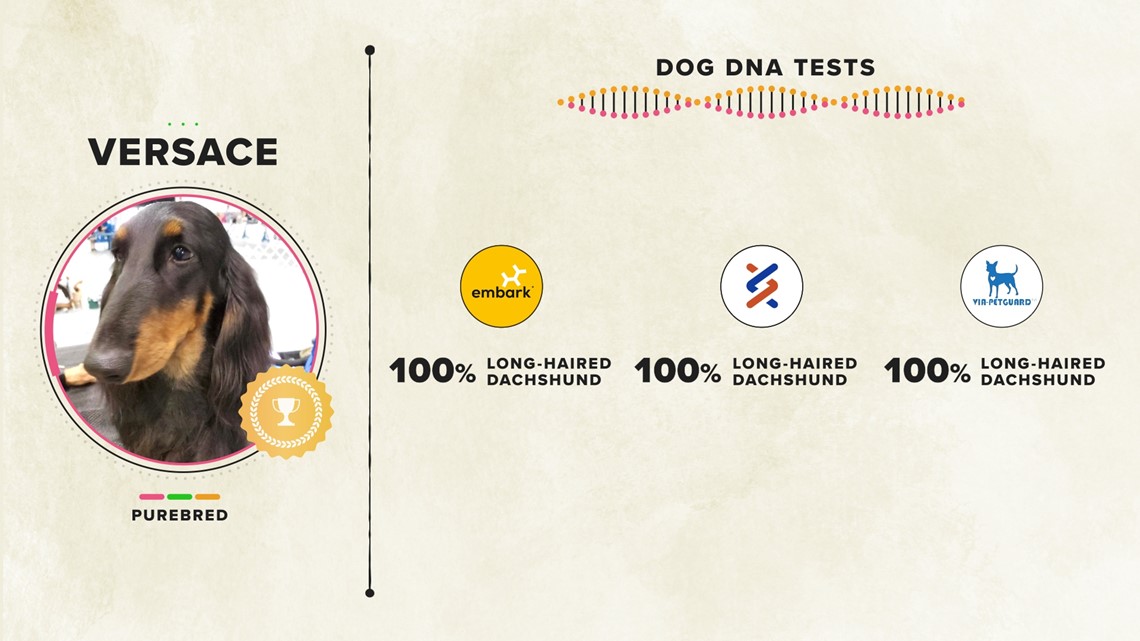
But once we looked at the results for the remaining two dogs and the human, Accu-Metrics’ results started drifting away from the Embark and Wisdom Panel results.
Maka, the rescue mutt believed to be a Labrador retriever and wirehaired pointer mix, is mostly American pit bull terrier and Australian cattle dog, according to both Embark and Wisdom Panel. Although Embark said he is 68% those two breeds, while Wisdom Panel said he’s just 29% those two breeds.
Accu-Metrics’ testing, however, found entirely different results. It said Maka is 100% Labrador retriever.

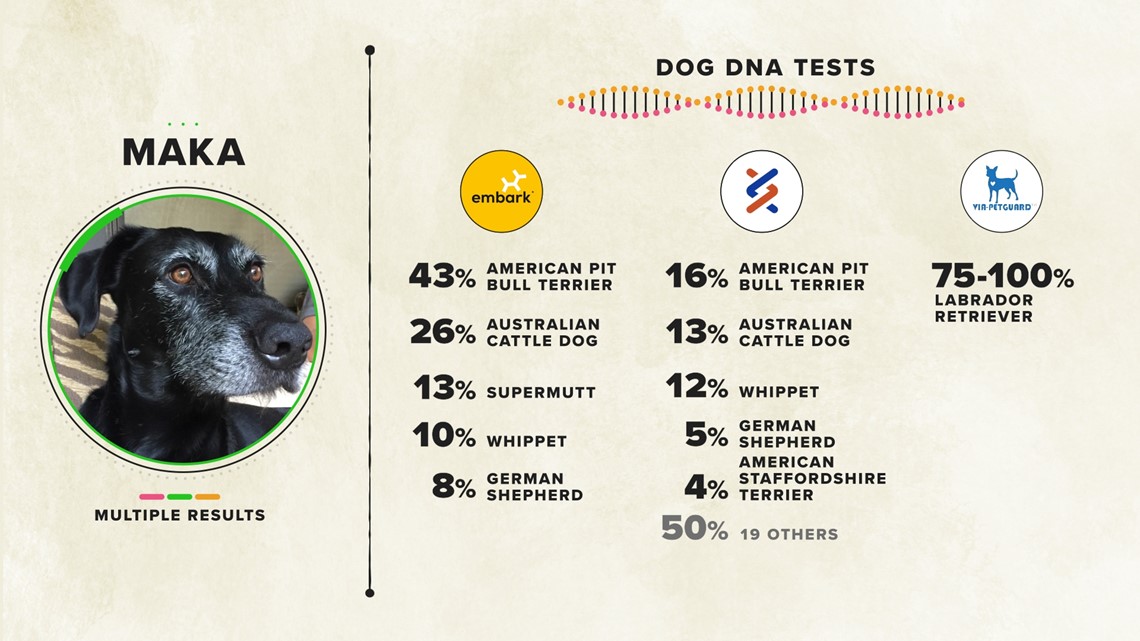
Beau, the mutt Sidorowicz believed is a Labrador retriever mix, is part pit bull terrier, both Embark and Wisdom say. Embark said he is 31% pit bull, 25% “supermutt” and 19% golden retriever. Wisdom Panel said he’s about 25% pit bull and 22% golden retriever.
But again, Accu-Metrics’ results were very different. Its result said Beau is largely a mix of American Staffordshire terrier and Belgian malinois.


“Dogs like Beau and Maka who are extremely genetically diverse have DNA segments so small that they can no longer be accurately assigned to one particular breed,” Dockweiler said. “At Embark, when that happens, we report what we call a percentage of ‘Supermutt’ ancestry. That’s our way of informing the dog owner about where some of those strands might come from – but go ‘farther back’ in their ancestry than the dog’s great grandparents.”
Ostrander says it makes sense that both rescue dogs have pit bull in their genetics because pit bulls are a breed that often end up in rescue situations.
Finally, we sent all three companies Sidorowicz’s DNA swab. Embark and Wisdom Panel said they couldn’t process the sample.
Accu-Metrics, however, said Sidorowicz is a lot like his dog. It said he is primarily Belgian malinois and Staffordshire bull terrier with a little bit of French bulldog in him, too.

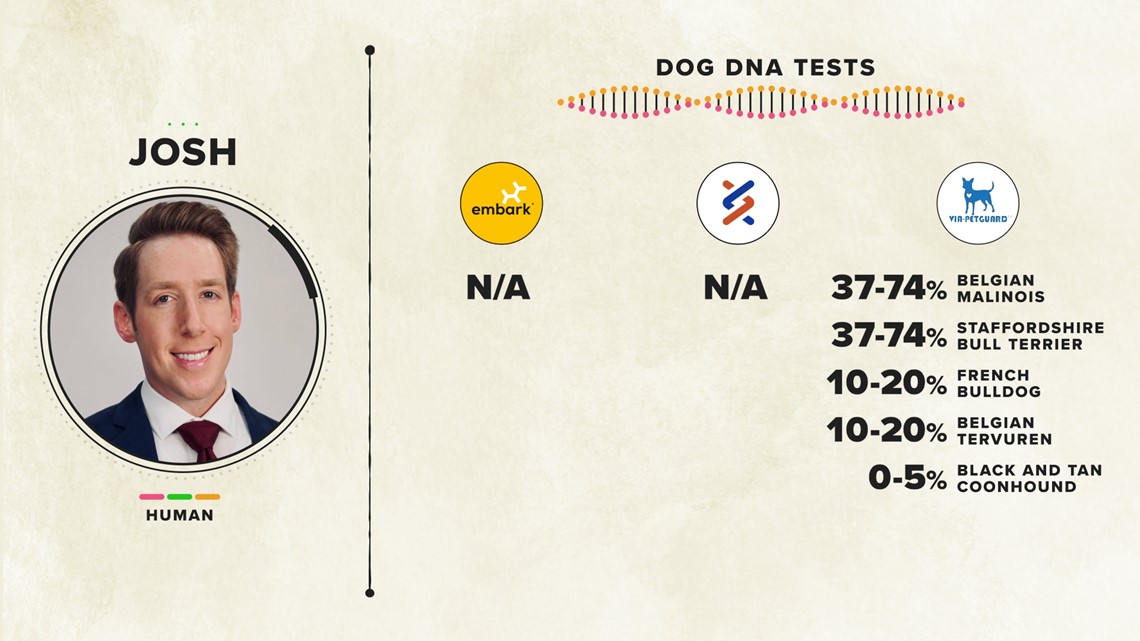
“The dog DNA testing industry is unregulated, which means it’s important for dog owners to do their research when it comes to selecting which test to use to determine breed ancestry,” Dockweiler, who works for Embark, said. “Look for a test that has a large reference database, uses research-grade genotyping technology, and uses microarray methods that meet or exceed industry quality control standards.”
ASPCA Pet Health Insurance also says you can “probably feel confident if you choose a reputable company with good reviews” when picking out a dog DNA test.
Credits:
- Reporter: Josh Sidorowicz
- Digital journalist: Emery Winter
- Video editor: Tolu Oluwadiya
- Graphics: Amie Casaldi and Eleni Hosack
- Social: Amanda Lashbaugh
- Editors: Lindsay Claiborn and Sara Roth


